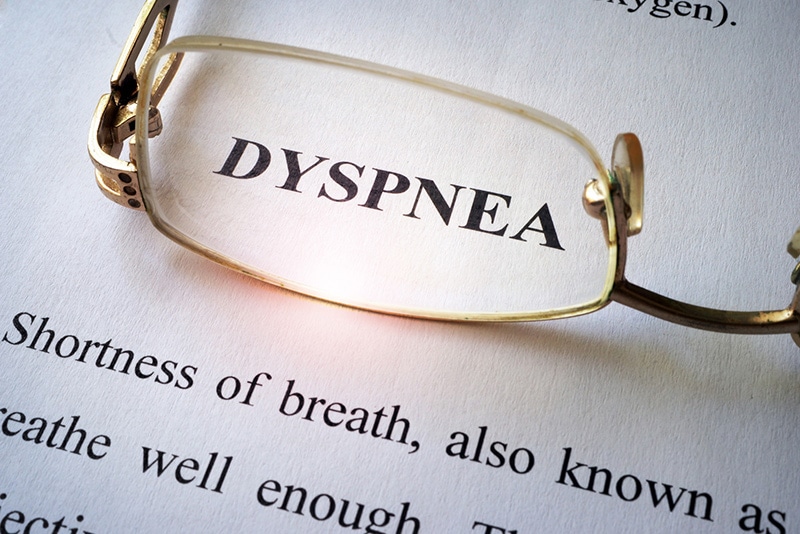Dyspnea refers to shortness of breath. It is a common symptom for many health issues reported in general practice and in hospital emergency rooms and can be a sign of a life-threatening condition. According to NCBI research, 7% of patients in hospital emergency rooms and 60% of those in ambulatory pulmonological practices complain of dyspnea. Practices providing treatments need to report the condition in medical records using correct medical codes, for which they can take the support of an experienced physician billing company.
While acute dyspnea could be due to conditions such as asthma, anxiety, pneumonia, any block in breathing passageways, allergy, anemia, heart failure, hypotension or low blood pressure, pulmonary embolism, collapsed lung, hiatal hernia or terminal illness, chronic dyspnea can be caused by asthma, COPD, heart problems, obesity, interstitial pulmonary fibrosis or certain lung conditions such as croup, traumatic lung injury, lung cancer, tuberculosis, pleurisy, pulmonary edema, pulmonary hypertension or sarcoidosis. In 2014, the American Thoracic Society (ATS) has proved that individuals with dyspnea, or shortness of breath have an increased long-term mortality risk compared with individuals without dyspnea.
Heart problems that can cause shortness of breath include cardiomyopathy, heart rhythm issues or pericarditis (inflammation of tissue that surrounds the heart). Obstructive lung diseases such as emphysema and chronic bronchitis may also cause breath issues. If the symptom continues for some time, it can also be an indication of some life-threatening conditions. In a healthy person, breath issues can be the result of very strenuous exercise, extreme temperatures or higher altitude.
The major symptom is labored breathing that may last for a few minutes after strenuous activity. Other signs include tightness in the chest, shortness of breath after exertion, rapid/shallow breathing, heart palpitations, wheezing, and coughing. Emergency medical treatment is necessary, if the symptoms include sudden onset of severe dyspnea, chest pain, nausea or loss of ability to function.
COVID-19 and Dyspnea
Shortness of breath or difficulty in breathing is also a possible symptom of COVID-19. CDC highlights that emergency warning signs for COVID-19 include trouble breathing, persistent pain or pressure in the chest, new confusion, inability to wake or stay awake and pale, gray, or blue-colored skin, lips, or nail beds, depending on skin tone. This symptom can persist and quickly escalate in people with COVID-19. Shortness of breath usually occurs a few days after initial infection. Some people may not develop this symptom at all. CDC reports that 31 to 40 percent of people with confirmed cases of COVID-19 have experienced shortness of breath. Those aged 65 or older, smokers, diabetic patients, COPD or patients with cardiovascular disease and those with a compromised immune system are at a higher risk for developing breathing issues with COVID-19.
ICD-10 Codes to Report Dyspnea
- R06 Abnormalities of breathing
- R06.0 Dyspnea
- R06.00 Dyspnea unspecified
- R06.01 Orthopnea
- R06.02 Shortness of breath
- R06.03 Acute respiratory distress
- R06.09 Other forms of dyspnea
- R06.0 Dyspnea
Rapid evaluation and diagnosis are crucial to reduce the burden of disease. Diagnosis may include a complete physical examination using X-rays and computed tomography (CT) images to evaluate the health of the person’s heart, lungs, and related systems, electrocardiogram (ECG) to find any signs of a heart attack, spirometry tests to measure airflow and the patient’s lung capacity or other tests to check the oxygen level in a patient’s blood. Treatment for dyspnea depends on the cause of the problem.
Medications such as bronchodilators and steroids may be recommended, if dyspnea is linked to asthma. For those with severe symptoms, supplemental oxygen will be provided. For infection related dyspnea, antibiotics provide relief. Other effective medications are – opiates, non-steroidal anti-inflammatory drugs (NSAIDs), and anti-anxiety drugs. Busy practices can consider teaming up with professional medical billing services in USA to submit clean claims and get on-time reimbursement.
Related blogs




